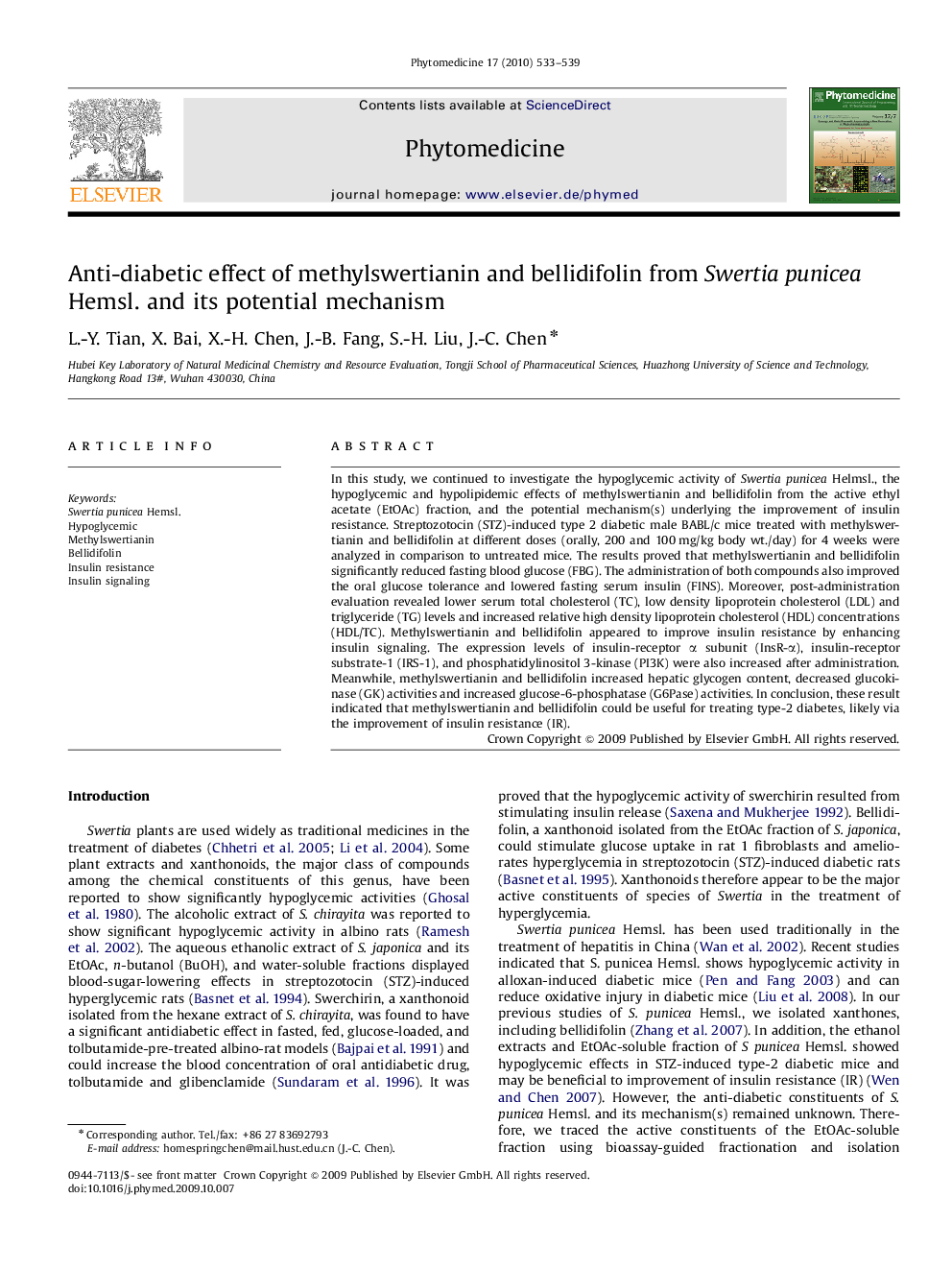| کد مقاله | کد نشریه | سال انتشار | مقاله انگلیسی | نسخه تمام متن |
|---|---|---|---|---|
| 2497377 | 1116199 | 2010 | 7 صفحه PDF | دانلود رایگان |

In this study, we continued to investigate the hypoglycemic activity of Swertia punicea Helmsl., the hypoglycemic and hypolipidemic effects of methylswertianin and bellidifolin from the active ethyl acetate (EtOAc) fraction, and the potential mechanism(s) underlying the improvement of insulin resistance. Streptozotocin (STZ)-induced type 2 diabetic male BABL/c mice treated with methylswertianin and bellidifolin at different doses (orally, 200 and 100 mg/kg body wt./day) for 4 weeks were analyzed in comparison to untreated mice. The results proved that methylswertianin and bellidifolin significantly reduced fasting blood glucose (FBG). The administration of both compounds also improved the oral glucose tolerance and lowered fasting serum insulin (FINS). Moreover, post-administration evaluation revealed lower serum total cholesterol (TC), low density lipoprotein cholesterol (LDL) and triglyceride (TG) levels and increased relative high density lipoprotein cholesterol (HDL) concentrations (HDL/TC). Methylswertianin and bellidifolin appeared to improve insulin resistance by enhancing insulin signaling. The expression levels of insulin-receptor α subunit (InsR-α), insulin-receptor substrate-1 (IRS-1), and phosphatidylinositol 3-kinase (PI3K) were also increased after administration. Meanwhile, methylswertianin and bellidifolin increased hepatic glycogen content, decreased glucokinase (GK) activities and increased glucose-6-phosphatase (G6Pase) activities. In conclusion, these result indicated that methylswertianin and bellidifolin could be useful for treating type-2 diabetes, likely via the improvement of insulin resistance (IR).
Journal: Phytomedicine - Volume 17, Issue 7, June 2010, Pages 533–539